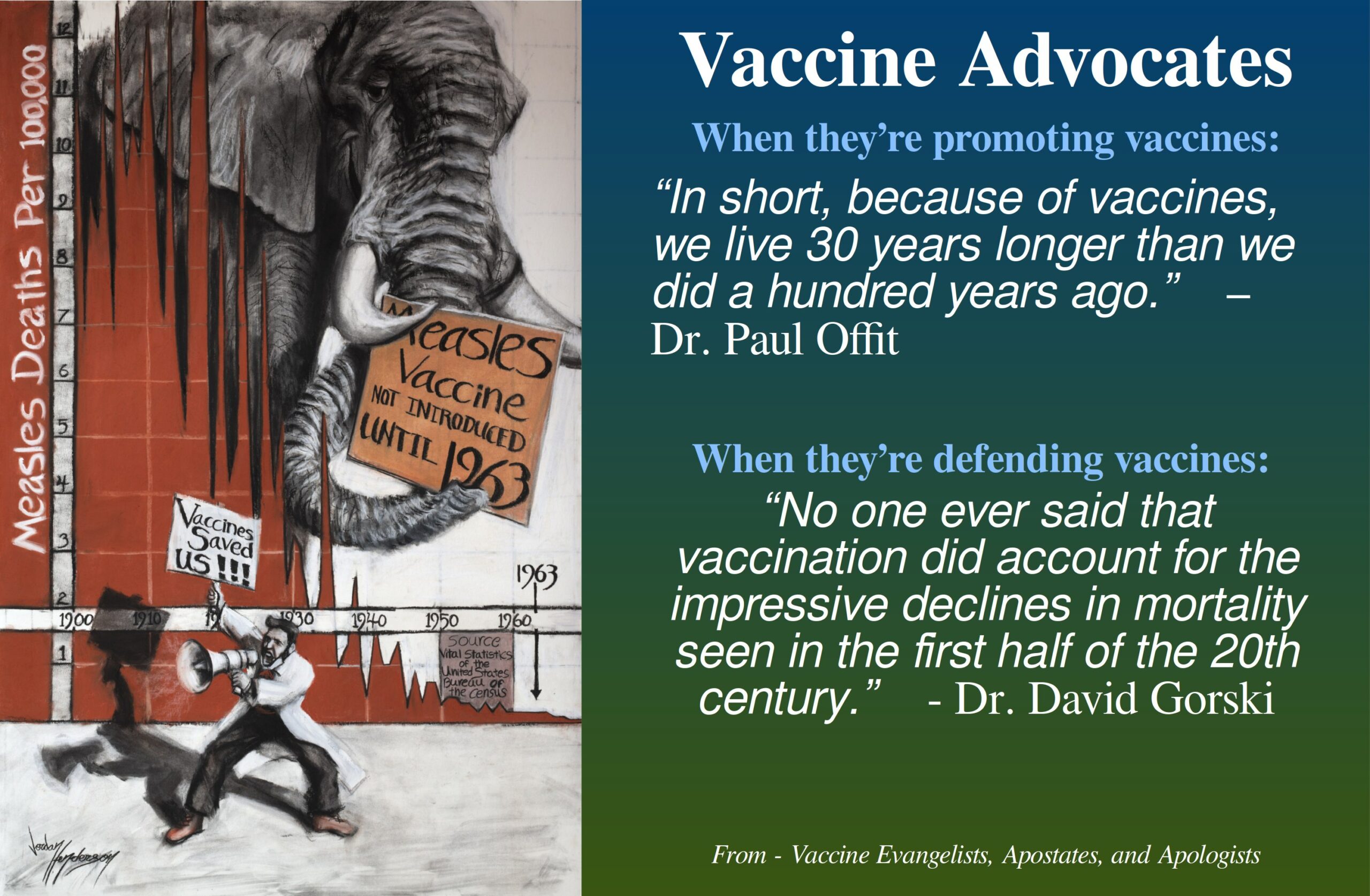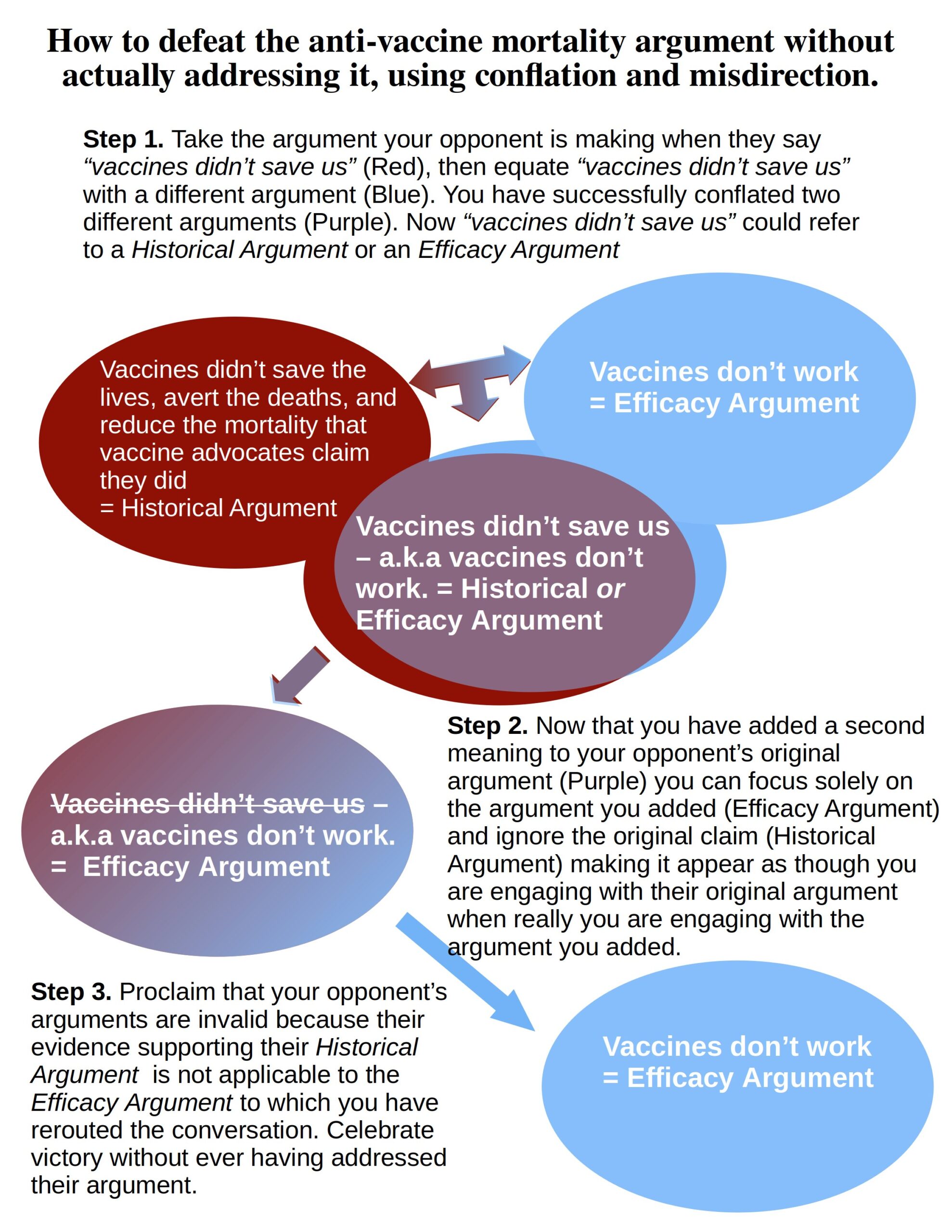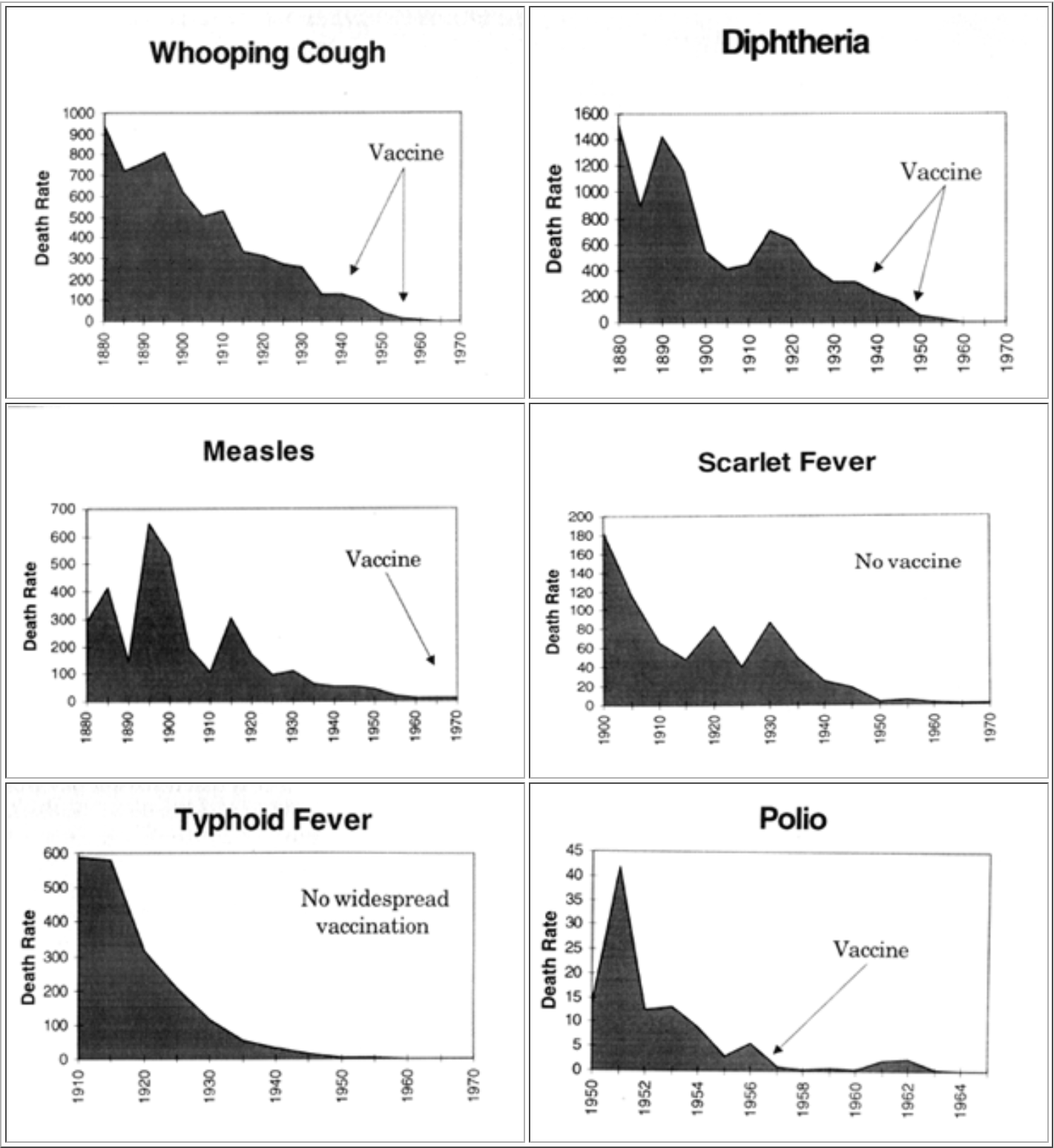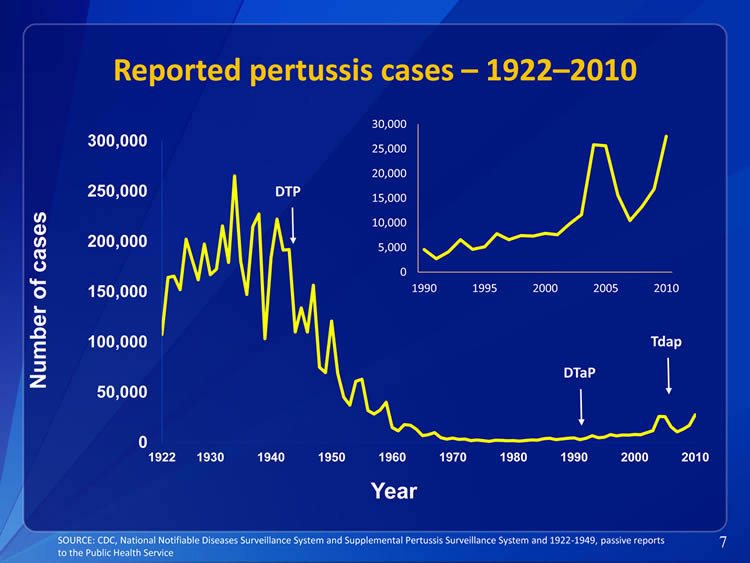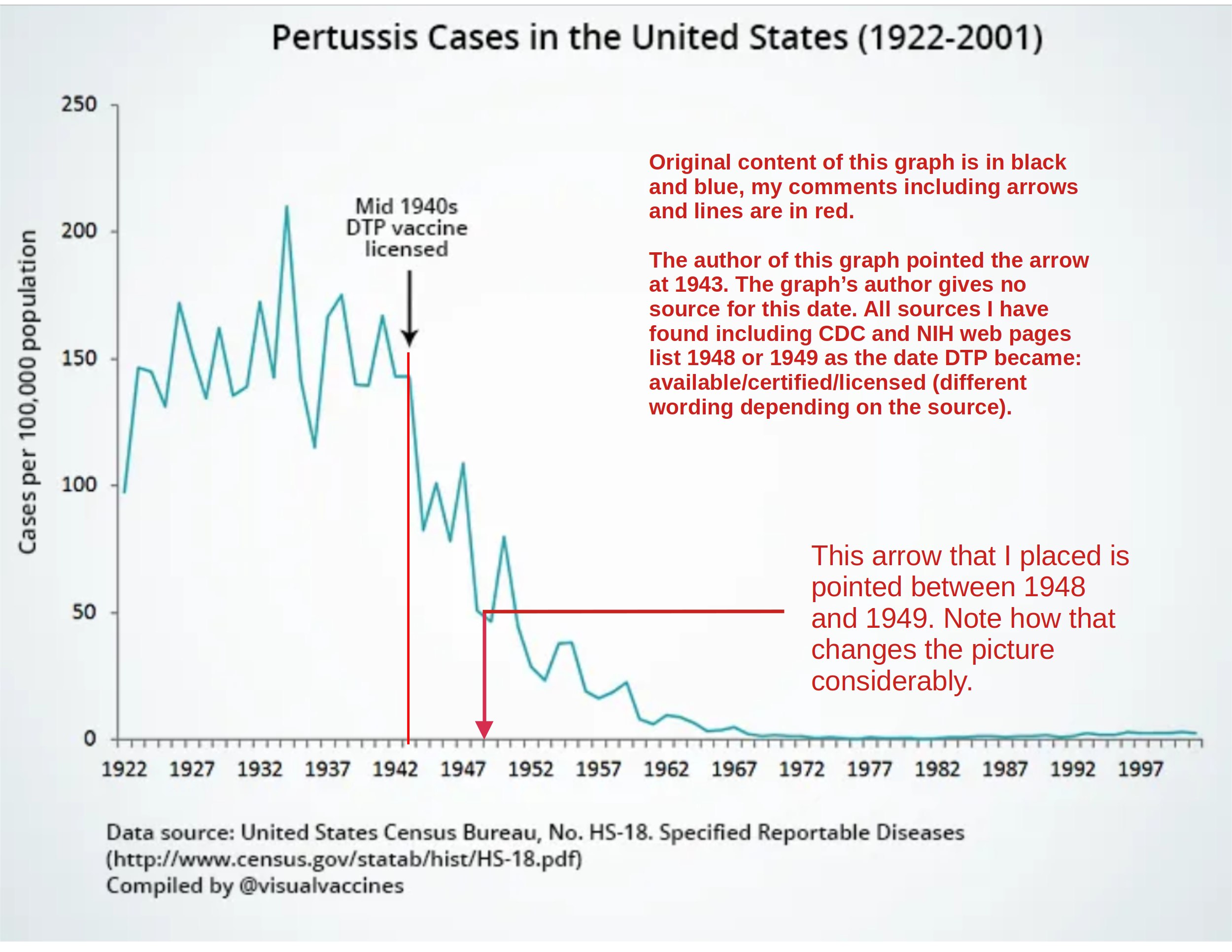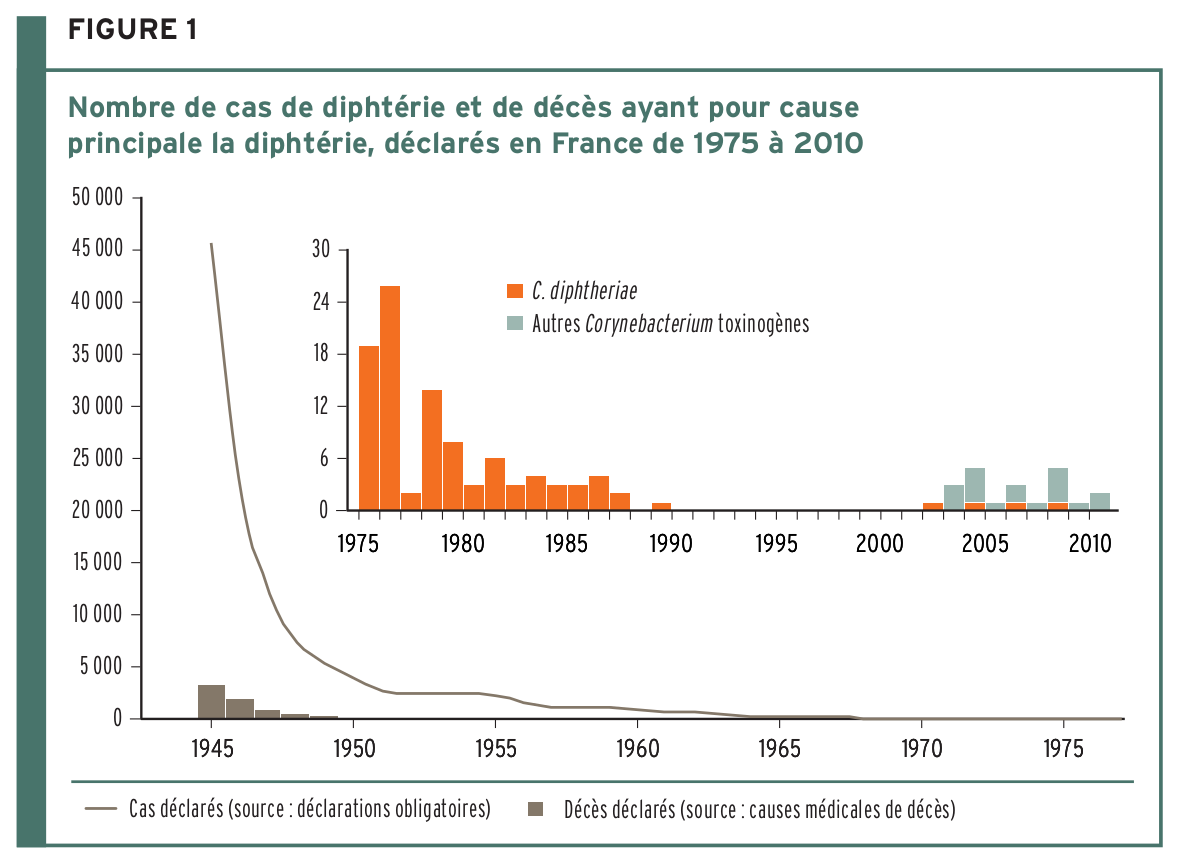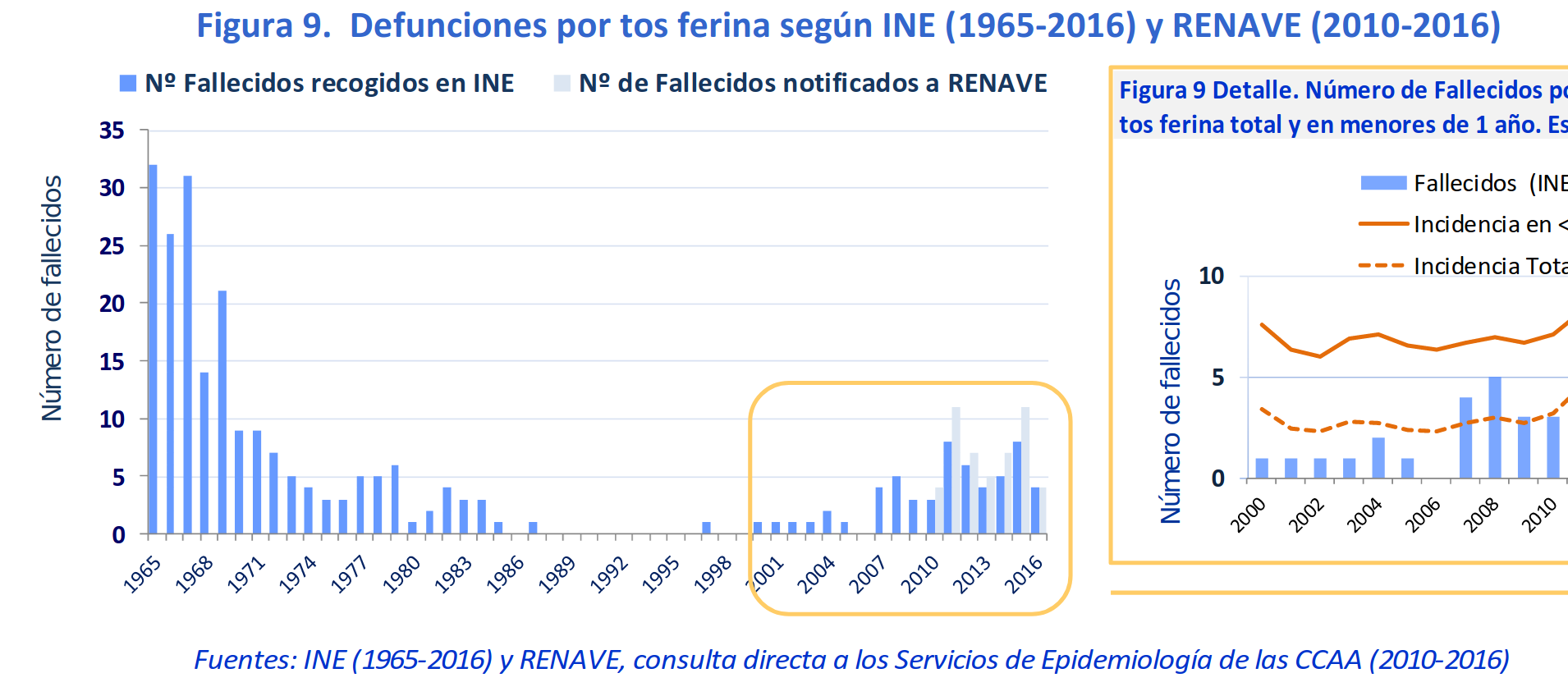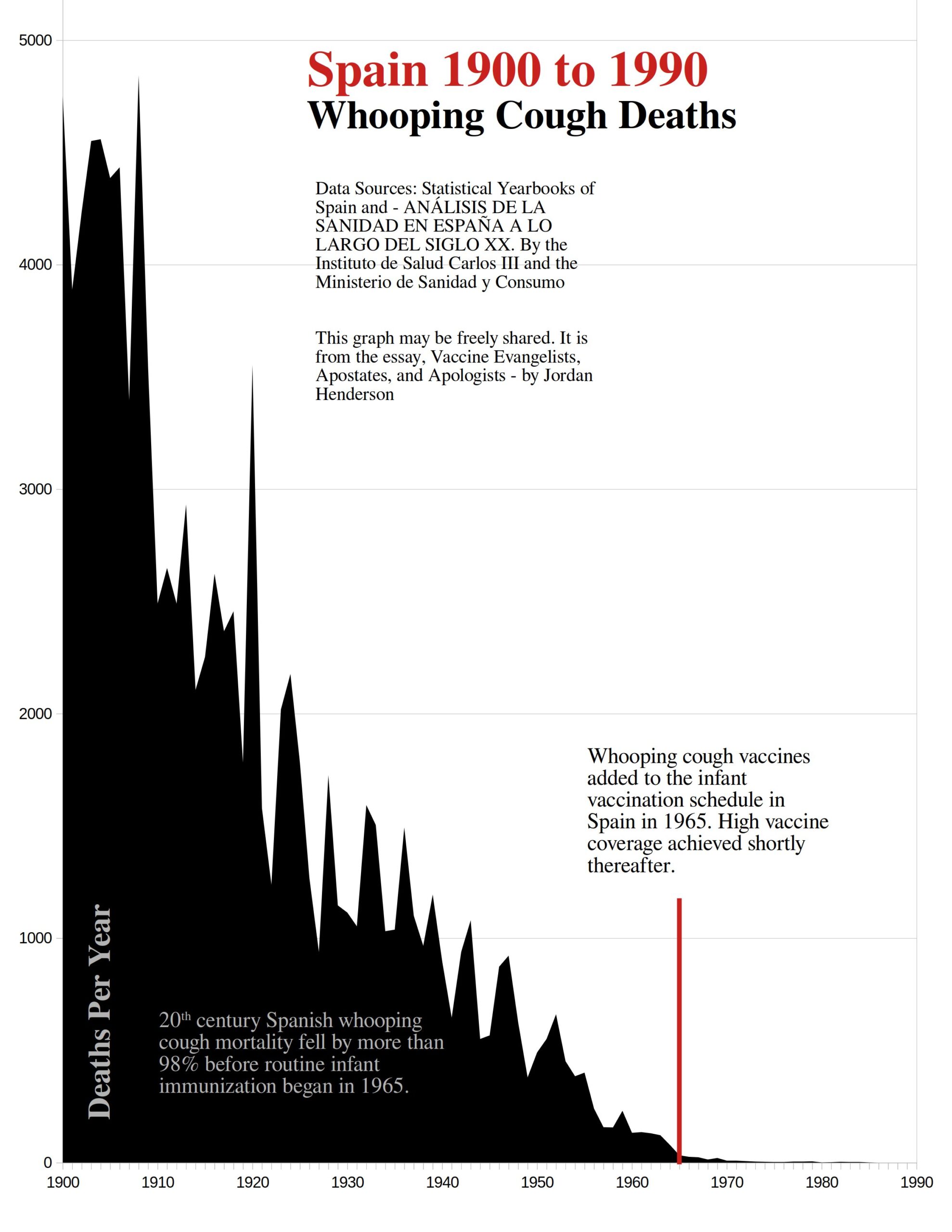Vaccine Evangelists, Apostates, and Apologists: Part 5 — The Apologists
This is the fifth installment of the essay series, Vaccine Evangelists, Apostates and Apologists. Here are the links to the earlier installments:
This essay installment is centered around the deconstruction of Dr. David Gorski’s vaccine apologetics. Gorski is a prolific writer and polemicist who has devoted a considerable number of his articles to defending the reputation of vaccines. The deconstruction of Gorski’s arguments will provide a springboard for hitting a couple especially interesting related topics. In particular we will in this essay installment:
- Explore a selection of deceptive pro-vaccine graphs from various institutional and independent authors.
- See what really happened in Sweden when they stopped vaccinating against pertussis.
Note to readers: there’s been a change in the planned order of these essays. I wrote in the overview that Part 5 of this essay series was going to be Tall Tales: The Platitude of Vaccines and Water, and Other Global Claims. I wrote that essay out but I ultimately concluded that that whole essay was simply not essential to this series and threatened to bog down this series, as well as eat up my time refining it, so I axed that essay and I’m cutting straight to the deconstruction of the Vaccine Apologists here for Part 5.
~ Recap of a couple points especially salient to this essay installment ~
In Part 1 of this series I introduced the reader to the principal misconception of the Doctrine of Salvation Through Vaccination. This is the belief promoted by vaccine evangelists that:
Vaccines played a primary role in causing the drastic decline in deaths attributed to infectious disease in general, and many major diseases in particular, that occurred in the late 19th and early 20th centuries, especially as this relates to the plummet in infant and child mortality rates. And they (vaccine evangelists) also imply and sometimes directly preach the corollary belief that, these diseases would return with comparable devastation if we stopped vaccination against them.
In Part 1. and Part 4. of this series I provided extensive documentation of doctors, pediatricians, scientists, journalists and public health organizations making claims such as the graveyard gambits, lifespan lectures, and so forth, that directly promote the misconception laid out above. They make claims of lives saved, deaths averted, mortality reduced. Claims that give undue credit to vaccines.
I provided the reader various analogies by which to understand the dynamic by which the Vaccine Apologists indirectly defend the Evangelists from the criticism of the Apostates.
The analogies were: Bait and Switch Confidence Games, Motte and Bailey Doctrines, Gaslighting, and Red Herrings.
These are all means by which the following dynamic takes place:
Vaccine Evangelists make claims that are directly contradicted by the historical mortality data.
Vaccine Apostates show that that the evangelists’ claims are directly contradicted by the historical mortality data.
Vaccine Apologists cannot directly defend the claims of the vaccine evangelists because the evangelists are indeed wrong, and their claims and implications are directly contradicted by the mortality data, so the apologists find all sorts of ways to confuse, misdirect, and get the conversation away from the matter of historical mortality declines altogether. In short, they deflect people’s attention off the main point.
All this is important to keep in mind as we focus our attention on the Apologists.
~End of Recap~
Table of Contents for Part 5
1 – Case Example #2 of Vaccine Apologetics: Dr. David Gorski’s articles:
- Leads with misdirection and conflation
- Illustrative Fable: The Vax Fire Crew and The Great Fire
- Capitalizing on Conflation
- Likely that Gorski is arguing in bad faith
- But don’t anti-vaccinationists argue that vaccines don’t work?
2 – Pot Calling the Kettle black
- Gorski deconstructs a deceptive anti-vaccine graph
- Gorski uses a deceptive pro-vaccine graph from the CDC
3 – Setting the Record Straight: Deceptive Pro-Vaccine Graphs Galore
- French deceptive pro-vaccine graph
- Spanish deceptive pro-vaccine graph
- Australian deceptive pro-vaccine graph
- American (using English data) deceptive pro-vaccine graph
- Who then is really creating all the deceptive graphs?
- This is just the tip of the iceberg
4 – Unsubstantiated claims about modern medicine
- A close look at Gorski’s iron lung example
- What then did cause the infectious disease mortality decline?
- What you would logically need to do to substantiate Gorski’s medical care claim
5 – The Swedish vaccine warning story is an own goal* for the vaccinationists
- Whooping cough death in Sweden
- Whooping cough cases in Sweden
- Coup de grâce: cases divided by deaths equals . . .
(* “Own goal” is to inadvertently inflict a defeat on one’s own side: The Swedish example is put forward by the vaccinationists to demonstrate how bad it would be if we stopped vaccinating, but closer inspection of the Swedish example reveals the opposite.)
6 – Summary of my critique of Gorski’s arguments
- Principal Criticism
1 – Case Example #2 of Vaccine Apologetics: Dr. David Gorski’s articles:
“Vaccines didn’t save us” (a.k.a. “vaccines don’t work”): Intellectual dishonesty at its most naked.”
&
J.B. Handley versus vaccine science. Again. Not surprisingly, J.B. loses.
We began the deconstruction of vaccine apologetics in Part 3 with:
Case Example #1 of Vaccine Apologetics Isabella B’s article Graphical Proof that Vaccines Work.
Now we will deconstruct our second case example; comprised of articles by the vaccine apologist Dr. David Gorski. Especially the articles “Vaccines didn’t save us” (a.k.a. “vaccines don’t work”): Intellectual dishonesty at its most naked (Archived Version Here) and J.B. Handley versus vaccine science. Again. Not surprisingly, J.B. loses (Archived Version Here)
The first article Vaccines didn’t save us” (a.k.a. “vaccines don’t work”): Intellectual dishonesty at its most naked was published on Science Based Medicine back in 2010 and it is a Vaccine Apologist classic. That article is widely referenced by other Vaccine Apologists and continues to be the article that Gorski himself refers back to whenever the matter of undue credit given to vaccines comes up.
(Here Gorski is writing in 2023 referring back to his 2010 article. Here Gorski is writing in 2021 again referring back to his 2010 article. He also refers back to this 2012 article of his, but his 2012 article only deals with the matter of undue credit given vaccines by referring back to Gorski’s 2010 article!)
So, Gorski’s article “Vaccines didn’t save us” (a.k.a. “vaccines don’t work”): Intellectual dishonesty at its most naked” isn’t just a popular classic with other Vaccine Apologists, it’s Gorski’s own go to article to reference whenever dealing with apostates who are removing undue credit from vaccines.
The other article I know of in which Gorski deals with apostates removing undue credit from vaccines in which he doesn’t just refer back to his 2010 article is Gorski’s 2018 article J.B. Handley versus vaccine science. Again. Not surprisingly, J.B. loses.
I’ve taken trouble to document how Gorski continues to reference his 2010 article for the purpose of demonstrating that Gorski evidently still stands behind that work and believes that this article of his has stood the test of time.
So, I will deconstruct the classic 2010 article of Gorski’s, and also the 2018 article. These two comprise all of Gorski’s work focused on the debate surrounding the matter of undue credit given to vaccines, that I am aware of, with any of his other work that appears to deal with this matter merely referring back to one of these two articles.
Please consider taking the time to read Gorski’s Vaccine Apologist classic “Vaccines didn’t save us” (a.k.a. “vaccines don’t work”): Intellectual dishonesty at its most naked and/or the other Gorski article that we are here placing in the hot seat (J.B. Handley versus vaccine science. Again. Not surprisingly, J.B. loses).
Let’s begin the deconstruction!
Gorski Leads with Misdirection & Conflation
Gorski wastes no time in conflating two distinct ideas: The question of what vaccines have or have not done, with the question of whether or not vaccines work. Where does Gorski do this? Everywhere, but he starts right in the headline;
“Vaccines didn’t save us” (a.k.a. “vaccines don’t work”)
That’s as heavy handed of a conflation of two ideas as you can get; “vaccines didn’t save us” is a negation of claims about what vaccines have allegedly done. “vaccines don’t work” is an assertion that vaccines are inefficacious.
These are not the same claim.
Let me show you what Gorski is doing and why. First with a visual (Figure 43) and then with an illustrative fable:
Figure 43
Illustrative Fable: The Vax Fire crew and the Great Fire
Once upon a time The Great Fire raged across vast swaths of some region, burning homes and woodlands.
A small crew of firefighters showed up known as The Vax Fire Crew.
After The Vax Fire Crew showed up the fire was put out.
The Vax Fire Crew were celebrated for their heroic deeds – for they put out the fire. How do we know that they put out the fire? Simple;
There was a great fire.
Then The Vax Fire Crew arrived.
After The Vax Fire Crew arrived the fire was put out.
What more do you possibly need to know? The Vax Fire Crew saved us, they put out the fire.
Lots of expert-written informational material celebrating The Vax Fire Crew’s deeds was provided to the public stating things like, “Before The Vax Fire Crew arrived The Great Fire burned X number of acres per day, after they arrived the fire was put out.”
Now some naysayers and doubting Thomases insisted that The Vax Fire Crew didn’t save us: They pointed to publicly available time stamped series of regularly taken aerial photographs of The Great Fire from fire reconnaissance planes. These photos clearly showed that almost all of the fire had been put out before The Vax Fire Crew had even arrived on scene.
A combination of other factors such as rainstorms, cooler weather, farmers with plows, and other fire crews such as the Nutrition Fire Crew, had done almost all of the work and put out almost all of the fire before the The Vax Fire Crew even showed up.
Well, this was awkward; the most glorious deed that The Vax Fire Crew had done, was being exposed as a sham. So much of their reputation rested on this, what were they to do?
The Apologists for The Vax Fire Crew sprang into action. They could not deny that yes indeed almost all the fire was put out before The Vax Fire Crew had even arrived, but they also couldn’t let it get out that The Vax Fire Crew’s most glorious deed was a sham, so they had no choice but to misdirect the conversation away from the matter entirely.
Their strategy was brilliantly simple; they conflated the question of whether or not The Vax Fire Crew had put out The Great Fire with the question of whether or not The Vax Fire Crew was proficient at their job.
They conflated these two distinct concepts with headlines like this:
“The Vax Fire Crew didn’t save us” (a.k.a. “The Vax Fire Crew don’t work/aren’t proficient at their job”): Intellectual dishonesty at its most naked
Then any time someone brought up the time stamped aerial photographs showing that almost all The Great Fire had been put out before The Vax Fire Crew even arrived, the apologists for The Vax Fire Crew would retort;
“So, you’re saying that The Vax Fire Crew isn’t proficient at their job? You realize that these time stamped photos tell us nothing about whether or not The Vax Fire Crew is proficient? They are irrelevant to the conversation; the time stamped photos are a non sequitur. To judge the proficiency of the The Vax Fire Crew we need to look at these test results of how they did with fire line digging exercises, water pump operations, and hose lays.”
And so, the promoters of The Vax Fire Crew continued to preach the misconception that The Vax Fire Crew had put out The Great Fire. And the apologists defended the reputation of The Vax Fire Crew by misdirecting the conversation through the conflation of the two distinct questions of whether or not The Vax Fire Crew had put out The Great Fire and whether or not they were proficient at their job.
They conflated the matter of what the Vax Fire Crew did or didn’t do with the matter of what they could or couldn’t do.
The End (of the illustrative fable)
Capitalizing on Conflation
What I just described in the illustrative fable is precisely what Gorski is doing. Gorski knows better than to deny that almost all the infectious disease mortality from most the major infectious diseases declined before the respective vaccines for those diseases were introduced or became widespread.
In order to avoid conceding that the reputation of vaccines is resting on a mountain of undue credit Gorski has no choice but to misdirect the conversation away from the question of what vaccines did or did not do, by conflating that question with the question of whether or not vaccines work.
Let’s observe how Gorski can use this conflation of ideas to skip right past the main point of those he is criticizing.
In his 2010 classic“Vaccines didn’t save us” (a.k.a. “vaccines don’t work”): Intellectual dishonesty at its most naked Gorski takes issue with these graphs of Australian mortality profiles by Greg Beattie.
Figure 44
Here is what Gorski has to say (emphasis in the original):
“In fact, let’s look at the Vaccination Library claims first. Notice that there are six graphs, four of which are for vaccine-preventable diseases for which widespread vaccination was undertaken, two for which it was not. All of them show decreasing death rates from various diseases. Wow! It seems like slam dunk evidence, doesn’t it? Vaccines didn’t save us! After all, death rates were declining years before the vaccine, and they were declining for the diseases that didn’t even need a vaccine!
Death rates.
Here’s the problem. It’s not surprising that death rates were declining before introduction of the vaccines. Medicine was improving. More importantly, supportive care was improving. For example, take the case of polio. Before the introduction of the iron lung and its widespread use, for example, if a polio patient developed paralysis of the respiratory muscles, he would almost certainly die. The iron lung allowed such patients to live. Some even survived in an iron lung for decades. No doubt improved nutrition also played a role as well. However, if you want to get an idea of the impact of vaccines on infectious disease, take a look at this graph from the CDC of measles incidence, not death rates:”
While Gorski insists that this is not surprising, it most certainly would come as a shock to many people that between most of the mortality decline up to almost all of the mortality decline for these diseases occurred in the absence of vaccination against them and before their respective vaccination programs.
The reason this would come as a shock to many is because as I demonstrated in Parts 1 and 4 of this essay series, doctors, pediatricians, scientists, journalists, and public health institutions preach messages which convey the idea that vaccines are principally responsible for the drastic reduction in infectious disease mortality.
Furthermore, this actually is slam-dunk evidence against the claims about lives saved, deaths averted, mortality reduced that vaccine evangelists preach, but Gorski does not acknowledge that his fellow vaccinationists have preached any such messages.
Gorski calls the Vaccination Library post with the graphs disingenuous, but how? They provide death rate graphs, which are clearly labeled death rate and then underneath those graphs they talk about them being exactly what they; are death rates. Where is the disingenuity? How is providing accurate information that is clearly labeled as exactly what it is disingenuous?
The answer is that Gorski is judging the graphs based on what they tell us about vaccine efficacy which of course is not the point of those graphs; those graphs were meant to give historical perspective.
The graphs Gorski is criticizing were created by Greg Beattie. Having encountered the strategy that Gorski is using, Beattie wrote in 2011:
“These people tend to argue one thing—that this data cannot be used to assess vaccine performance. And they are correct. These graphs do not make any attempt whatsoever to measure the performance of a vaccine. They simply put things into historical perspective for us. This perspective illustrates that vaccines were unimportant influences in the bigger picture; that they arrived too late to be considered potential contributors of any significance.
In Chapter Three we will examine (under a microscope) the contribution that vaccines made to the tail end of the declines. For now, let us simply acknowledge that, in historical perspective, vaccination made little if any contribution to the decline in deaths from each illness.
-From Beattie’s book Fooling Ourselves on the fundamental value of vaccines
Let’s zoom ahead to Gorski’s 2018 article and see how he continued to evade his opponent’s principal point by capitalizing on the conflation of two separate questions – Have vaccines done what they are claimed to have done? And – Are vaccines efficacious/do they work?
In Gorski’s 2018 article J.B. Handley versus vaccine science. Again. Not surprisingly, J.B. loses He is criticising this article by J.B Handley (Archived Version).
Now it is perfectly clear in Handley’s article (Which Gorski is criticizing) that Handley’s article is not about whether or not vaccines work, it is about whether or not vaccines have done what they are claimed to have done. Here is how Handley opened his article:
“Since 1900, there’s been a massive decline in mortality rates in developed countries, largely due to a marked decrease in deaths from infectious diseases. Did vaccines play a major role in this decline? The history and data provide clear answers that matter greatly in today’s vitriolic debate about vaccines”
Handley does not do a surprise pivot in his article to the separate question of whether or not vaccines work. Handley’s article sticks to the topic of whether or not vaccines played a major role in the mortality decline he is talking about. Handley provides a quote from someone arguing that vaccines do more harm then good, but that is not an argument against vaccine efficacy.
Gorski on the other hand, predictably conflates these two separate questions thereby allowing him to repeatedly misdirect and pivot away from the question at hand to the separate question of whether or not vaccines work. Gorski sets the stage by yet again directly conflating these two concepts before getting to his main points (emphasis mine);
“This time around, he reminded me of one of the two main tactics of antivaxers, a tactic that isn’t covered enough. Basically, there are two central tenets of antivaccine pseudoscience. The first, of course, is that vaccines are harmful because they’re chock full of toxins and cause all sorts of horrific health problems. Skeptics refute this type of misinformation quite well. However, the second tenet of antivaccine pseudoscience is that vaccines don’t work (or don’t work very well) and as a result are not nearly as beneficial as vaccine advocates claim. One variety of this “vaccines don’t work” trope is what I like to refer to as the “vaccines didn’t save us” gambit, which is essentially the claim that vaccines had little to do with the decline in infectious disease over the last century. You can tell that’s the trope by the title of Handley’s blog post, “Did vaccines save humanity?” I will give Handley credit for one thing. This is a wrinkle on this hoary old bit of antivaccine intellectual dishonesty that I haven’t seen before.”
After having set the stage with the direct conflation of distinct ideas (as you can see in the excerpt above), Gorski was free to repeatedly misdirect, and that is what he did again and again. Throughout his article Gorski misdirected the conversation away from the question of whether or not vaccines have saved the lives, averted the deaths, and reduced the mortality as the evangelists claim that they have to the separate question of whether or not vaccines work. The following are examples of Gorski doing this in his article (emphasis in the following excerpts from Gorski’s article is mine):
“Of course, what Kass was really showing was that there are more ways to prevent disease than just vaccines, and this is hardly a message that anyone in public health would dispute. Nor is it a message that shows that vaccines don’t work. I’ll elaborate more as I discuss the next reference cherry picked by Mr. Handley.”
~
“Consideration of mortality alone as the be-all and end-all of whether a vaccine works completely ignores all the morbidity, all the suffering caused by infectious disease.
~
“The use of mortality as the be-all and end-all of vaccine efficacy is an intentional strategy of the antivaccine movement. This strategy completely ignores the morbidity and suffering due to vaccine-preventable diseases.”
~
“No, the only one spreading lies here is Mr. Handley, who is also attacking an obvious straw man. Vaccines work.
The bottom line is that vaccines are safe, effective, and prevent disease. Yes, sanitation and public health measures decreased mortality from infectious diseases before vaccines for them were developed, but that doesn’t mean that they don’t work or aren’t important. The “vaccines didn’t save us” gambit, as demonstrated by J.B. Handley, remains intellectually dishonest.”
Those are all from Gorski’s 2018 article. As you can see, he repeatedly misdirects the conversation to the separate question of whether or not vaccines work. Gorski keeps asserting that “Vaccines work” as if he is correcting Handley. Yet in the article that Gorski is criticizing Handley does not once say “Vaccines don’t work” because again that is clearly not the argument Handley is making in that article; Handley’s article is about what vaccines didn’t do not what they can or could do.
I’ll take a second to point out also that in the second and third excerpts where Gorski states: This strategy completely ignores the morbidity and suffering due to vaccine-preventable diseases. He is arguing from the data we don’t have. Gorski provides no historical data sets of disease suffering sorted by cause. He uses a show of concern for serious disease complications only to downplay the serious disease complication sorted by cause data that we actually do have – which is death.
Interestingly though Gorski does exhibit a hint of understanding that the question at hand is the question of whether or not vaccines have done what they are claimed to have done. Gorski attempts to head off that question by asserting that his fellow vaccinationists have not been making the claims that they have in fact been making:
“No one ever said that vaccination did account for the impressive declines in mortality seen in the first half of the 20th century. Antivaxers like Handley like to make that claim, either explicitly or implicitly, but that doesn’t make it so.”
It is an easily demonstrable fact that vaccinationists did and do say what Gorski is claiming that they are not saying. I demonstrated this at the very beginning of this essay series; here I will simply point you to where I did that. The Lifespan Lectures directly falsify Gorski’s assertion that no one is saying this (Exhibits I through L in Part 1 of this essay series, and Exhibit T. in Part 4).
For example, in Exhibit I I documented four different instances of Paul Offit claiming that vaccines have added 30 years to our lifespan. In Exhibit T I shared an interview with Rino Rappuoli in which he reminds the audience that Before vaccines we lived 47 years and that if we stop vaccinating, we will return to living 47 years rather than the 85 current average at the time of the interview.
These are cut and dry examples of vaccinationists saying exactly what Gorski is asserting that no one is saying. And Paul Offit and Rino Rappuoli aren’t just any vaccinationists; they are some of the most prominent vaccine developers, and evangelists in the world.
Likely that Gorski is Arguing in Bad Faith
A potential excuse for Gorski could be that he had no idea that his fellow vaccinationists are heaping undue credit on vaccines for impressive historical mortality declines, which could be why Gorski claimed that no one is saying the things that they are demonstrably saying.
Firstly, this is implausible: if you are alive today you have almost certainly been exposed to these kinds of claims. If you are deeply involved in the Vaccine Wars there is simply no way that you wouldn’t be paying attention to these kinds of claims when you hear them; these claims wouldn’t slip past your notice.
But I can go beyond pointing to the implausibility that Gorski is unaware of the undue credit that Vax-Evangelists are heaping on vaccines; I can go a step further and definitively demonstrate that Gorski knows that these kinds of claims are being made.
Gorski watched The Vaccine War by PBS. We know this because he wrote a positive review of it as an article back in 2010.
The Vaccine War by PBS begins with Paul Offit claiming that vaccines have added 30 years to our lifespan. PBS appears to have polished up and edited the episode at some point, but you can go all the way back to the transcript that PBS posted in 2010 and see that the episode begins with Paul Offit claiming that vaccines have increased our lifespans by 30 years.
Later transcripts have some changes but still have Paul Offit proclaiming that vaccines have increased our lifespans by 30 years.
Gorski reviewed this episode; unless he skipped the introduction, which would be odd for someone writing a fairly in-depth review of it, then Gorski knows perfectly well that prominent vaccinationists are making these kinds of claims and that their claims are portrayed favorably as factual claims and amplified on national television.
But it gets worse. Gorski is arguably one of the people giving undue credit to vaccines for impressive mortality declines. From his 2012 article The problem of waning pertussis immunity I provide the following excerpts (emphasis mine):
“First, Cherry notes that the purpose of vaccination against B. pertussis is not to eliminate all disease. It’s to prevent serious disease (whooping cough) with its potentially horrific complications, up to and including death, particularly among young infants.”
~
“In any case, this graph illustrates quite clearly that the pertussis epidemics over the last few years are mere blips on the curve compared to what was observed in the past, before there was a vaccine available to combat pertussis. In other words, even with the recent epidemics in the US, this is not the bad old days, when up to 270,000 cases of pertussis could be diagnosed in a year, with as many as 10,000 deaths, mostly among infants.”
Gorski also quotes the CDC:
“Nevertheless, vaccination continues to be the single most effective strategy to reduce morbidity and mortality caused by pertussis.”
Gorski tells us about the US before vaccines with as many as 10,000 deaths. He also approvingly quotes someone who notes that the principal purpose of whooping cough vaccines is to prevent serious disease up to and including death, and Gorski quotes the CDC corroborating this. Gorski credits the improved situation to vaccines and makes no mention of other factors. This would no doubt give the reader the impression that vaccines are the reason or at least one of the principal reasons for the drastic reduction in whooping cough deaths. There can be little doubt either that it was Gorski’s intent to give the reader the impression that the vaccine was responsible for the impressive pertussis mortality decline.
What’s the graph he is talking about? I will show you in just a moment under the subheading – Gorski uses a deceptive pro-vaccine graph.
For now, let us just note that we know, and have documented, that Gorski knows that vaccinationists try to attribute impressive mortality reductions to vaccines, and that therefore mortality data is the appropriate data source for evaluating such claims.
Gorski’s efforts to sideline historical mortality data through denying that vaccinationists are making claims to which mortality data directly relates are rhetorical maneuvers that Gorski is likely doing in bad faith since we can demonstrate from his own writing that he knows that prominent vaccinationists are making the kind of claims that he insists no one is making, and he himself makes misleading statements that give readers the impression that vaccines are the reason for the USA no longer having 10,000 pertussis deaths per year.
But don’t anti-vaccinationists argue that vaccines don’t work?
Yes, they do. Many anti-vaccinationists most certainly argue against the efficacy of vaccines; many anti-vaccinationists do argue that vaccines don’t work. And some of the mortality data such as that showing the major smallpox epidemics that swept through heavily vaccinated regions in the 1870s does count as evidence against the efficacy of a vaccine (see the smallpox graphs at Dissolving Illusions).
What must be understood though is the simple concept that the same person can make different arguments on different topics and their arguments should be evaluated based on what they are arguing. The same person can make arguments both about whether or not vaccines work (a vaccine efficacy argument), and they can make an argument that vaccines did not do what they are said to have done (a historical argument).
The evidence that they present in their argument about whether or not vaccines work should be judged for its value in evaluating vaccine effectiveness.
The evidence that this same person presents in their argument that vaccines did not do what they are claimed to have done (a historical argument) should be judged in light of that question; whether or not vaccines did what they are claimed to have done.
For example: whether or not Greg Beattie or J. B. Handley make arguments that vaccines don’t work, does not change the logic that their arguments that vaccines did not do what they are claimed to have done, are arguments which should be evaluated as the historical arguments that they are.
What vaccines can or could do are vaccine efficacy questions.
What vaccines did or didn’t do are historical questions about what actually happened.
Greg Beattie is meticulous about noting that his graphs provide historical perspective and are not intended to answer vaccine effectiveness questions.
And J. B. Handley’s article that Gorski was criticizing was clearly about what vaccines didn’t do, not what they can or could do.
2 – Pot Calling the Kettle black
Gorski deconstructs a deceptive anti-vaccine graph
In his 2010 vaccine apologetics classic “Vaccines didn’t save us” (a.k.a. “vaccines don’t work”): Intellectual dishonesty at its most naked Gorski deconstructs a measles notifications of incidence graph for Canada created by Dr. Raymond Obomsawin. The Obomsawin Canadian measles cases graph is a deceptive graph which amounts to a lie by omission.
I’m not going to rehash how and why the Obomsawin Canadian measles notifications graph is deceptive here; Gorski already did an excellent job of deconstructing it which you can read in his article.
What work I have seen of Dr. Raymond Obomsawin I have appreciated (excepting this graph of his) and I believe his writings are well worth reading, some of which you can read over here on this website that vaccinationists positively love to hate.
Appreciation for Obomsawin’s work notwithstanding, I’m going to call it as I see it; Obomsawin’s Canadian measles notifications graph was deceptive and Gorski was right to deconstruct it.
Gorski uses a deceptive pro-vaccine graph
In Gorski’s 2012 article The problem of waning pertussis immunity he shares the following graph to prove a point that he is making:
Figure 45
What’s the problem with this graph? I deconstructed two similar pertussis cases graphs in Part 3 of this essay series (another one very similar to this also by the CDC and one by Isabella B) I’ll briefly recap:
DTP was licensed and/or introduced in 1948 or 1949 depending on which source you go by. Even Gorski’s fellow Science Based Medicine contributor Steven Novella, in an article on Science Based Medicine states:
“In 1948 the whole cell pertussis vaccine was combined with vaccines for diphtheria and tetanus to make the DTP vaccine.”
From – Whooping Cough Epidemic Steven Novella – April 4, 2012 (Gorski linked to Novella’s article in Gorski’s same article where he shared this graph).
Where is that arrow pointed on the CDC’s graph that Gorski shared? It should be pointed at 1948 or 1949, but they pointed the arrow at 1943 or 1944. You can tell by consulting the data source, and see that that little “shelf” in the data to the left of their arrow, right before the major drop, represents the two years 1942 and 1943 each of which had right around 190,000 reported cases.
Remember what happened when I corrected the arrow placement on the similarly deceptive graph by Isabella B (Figure 24 from Part 3)? It changed the picture considerably.
Figure 24 from Part 3 Revisited
The USA whooping cough notifications data set with the arrow placement for DTP corrected, far from corroborating the point that Gorski is trying to make, actually contradicts his point and shows the steep decline in whooping cough notifications beginning well before the introduction of DTP.
To be clear, even with the arrow placement corrected, I do not think that the USA whooping cough incident notification data proves much of anything at all, and I would not trust it as a gauge of actual incidence because it is a weak incomplete data source for the reasons I laid out in Part 3.
However, these graphs by the CDC and Isabella B are unmistakably deceptive once deconstructed, for they have “misplaced” the arrow for DTP to the very area on the graph that would make the vaccine look as good as possible.
I am going to give Gorski the full benefit of the doubt here: I won’t accuse him of being intentionally deceptive on this, I will instead charitably assume that he made no attempt to double check the CDC’s work, and that he was sufficiently unfamiliar with his subject matter that he did not notice something amiss in the graph, and that therefore he did not know that the CDC graph he shared was deceptive and that once corrected it actually contradicts the point he was trying to make.
3 – Setting the Record Straight: Deceptive Pro-Vaccine Graphs Galore
It is of course quite common for vaccinationists to charge that anti-vaccinationists are dishonest, misleading, lying by omission and so forth, with the unstated implication being that vaccinationists are forthright, or at least more forthright than the anti-vaccinationists.
Gorski has been claiming that anti-vaccinationist graphs and “vaccines didn’t save us” arguments are “intellectually dishonest” for at least13 years now. His basis for this claim is his own conflation and subsequent equivocation of two distinct concepts as we just now reviewed, and also that one deceptive 2009 graph that uses Canadian measles notifications of incidence data that Gorski points to. One graph from one author, that’s it. To date that’s all Gorski’s got on the opposition’s graphical presentations.
Now, what have we got on the vaccinationists’ graphical presentations? Already we’ve reviewed four deceptive pro-vaccine graphs: The deceptive pertussis graph, and the deceptive diphtheria graph by Isabella B, that we reviewed in Part 3 of this essay series, and two different instances of the CDC creating deceptive pertussis notifications graphs, one of which we reviewed in Part 3 and one of which we just now looked at (Figure 45, this essay).
So already the score is 4 to 1. I’m going to go ahead and double that with a review of four more deceptive pro-vaccine graphs. Gleefully pointing to deceptive pro-vaccine graphs is good fun of course but it is also educational, and helps us catch future pro-vaccine deception by understanding past deception, so let’s set the record straight.
French deceptive pro-vaccine graph
France is ground zero for the diphtheria toxoid vaccine. According to the paper Childhood Vaccine Development: An Overview. Baker, J., Katz, S.:
“The key figure in developing the first efficacious and well-tolerated toxoid vaccines was the French investigator Léon Ramon of the Pasteur Institute. Ramon used both heat and formalin to generate a chemically modified toxin (which he termed anatoxin) with better properties than those of Glenny’s toxoid in 1923. The French Academy of Medicine approved this vaccine for children in 1927. Ramon, it should be noted, also played a central role in developing tetanus toxoid between 1923 and 1926. In no small thanks to Ramon’s advocacy efforts, France used diphtheria toxoid widely among children and tetanus toxoid among the military during the 1930s.”
And according to the diphtheria page on the website of the Montpellier University Hospital Center.
“Vaccination was made compulsory for military service in 1931 then compulsory for all in 1938. Massive campaigns were organized in 1942 and applied mainly in occupied zones; diphtheria vaccination was compulsory in Germany in 1941.”
Let’s take these dates for diphtheria vaccination in France and juxtapose them with the French diphtheria death and notifications of incidence data.
Figure 46
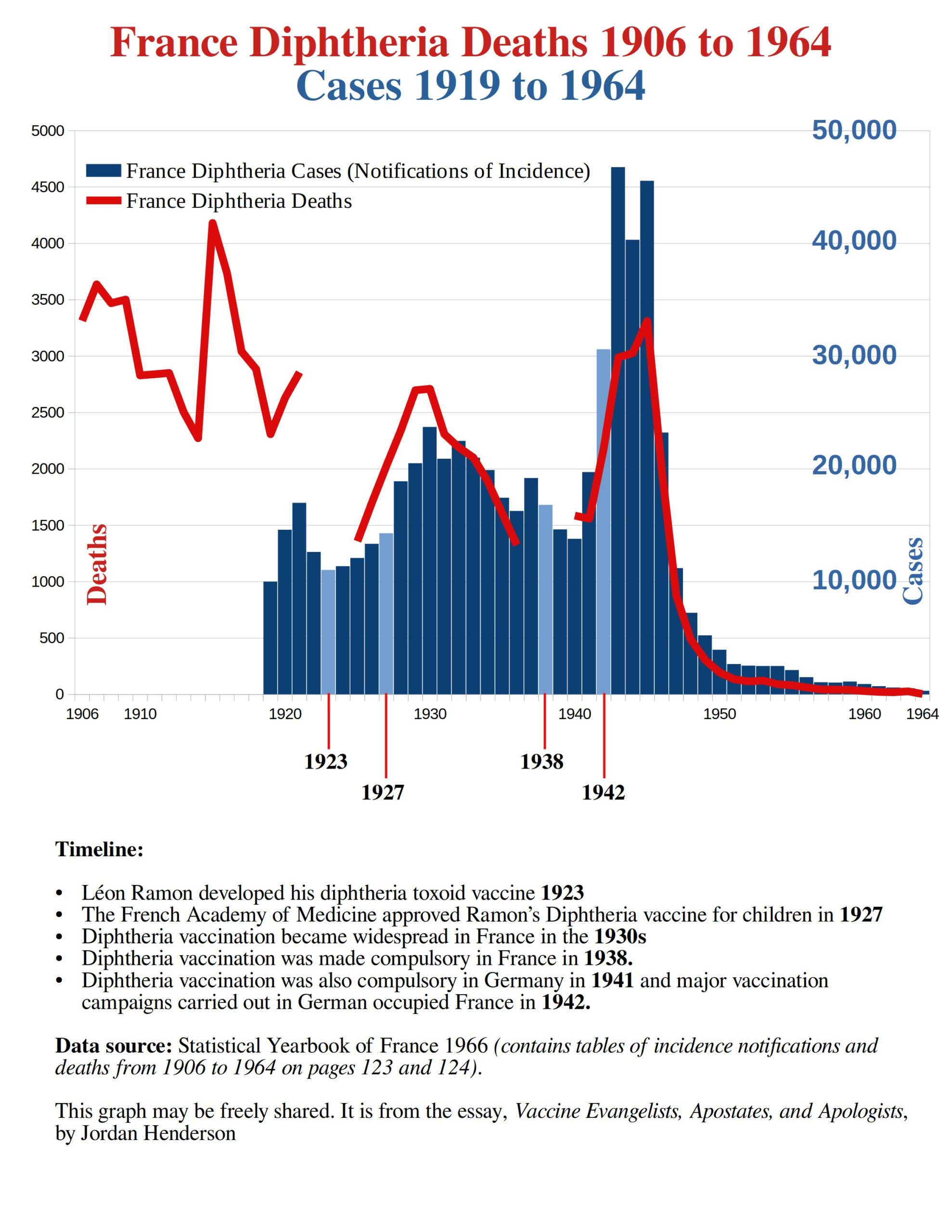 There are gaps in the diphtheria mortality data available for France, hence the gaps in the red line for mortality. (Here is a link to the 1966 Statistical Yearbook of France from which I pulled the data for this graph).
There are gaps in the diphtheria mortality data available for France, hence the gaps in the red line for mortality. (Here is a link to the 1966 Statistical Yearbook of France from which I pulled the data for this graph).
We can see that this French data could present a rather awkward situation for our vaccinationist friends.
A major spike in diphtheria deaths, accompanied by the years with the greatest recorded number of diphtheria cases for France, occurs well after diphtheria vaccination has been developed, approved, used and made compulsory in France.
If they tried crediting the vaccine for the decline after the diphtheria toxoid vaccine had merely been developed in 1923, as Isabella B did on her USA diphtheria graph (Part 3 of this essay series Figure 21), it would look bad for the vaccine as here in France the rates go up after 1923.
The year of vaccine approval, 1927, won’t help them either as the rates go up after that year too.
Nor will it help their case to point to the year the French government made diphtheria vaccination compulsory (1938) nor can they make this data look good for them by pointing to the mass vaccination campaigns carried out in German occupied France (1942).
Here it does not matter if they pivot to the notifications data alone, it still doesn’t support their narrative. Whatever are the vaccinationists to do with this awkward French data right from the pioneers of diphtheria vaccination?
Easy, they just chop off the portion of the graph that looks bad for the vaccine, and they start at a point that looks good for the vaccine. That is exactly what they do.
Figure 47
The graph above is a large graph of diphtheria cases and deaths from 1945 to 1975 with a smaller inset graph that is a detail from 1975 on. This graph is from page 51 of Guide to Vaccination by the French General Directorate of Health Technical Committee on Vaccinations.
In the diphtheria section of that guide, they make no mention of the diphtheria vaccine having been made compulsory in France in 1938 and having been in use for many years before that. They shamelessly only mention vaccination efforts from 1945 onward and start their graph at that date.
Spanish deceptive pro-vaccine graph
In Part 4 of this essay series I shared multiple examples of Spanish Vax-Evangelist preachings which would give you the idea that the introduction of the pertussis vaccine to the immunization schedule in 1965 was the principle reason for the reduction in whooping cough mortality (Exhibits M through P). And I provided a graph of the Spanish mortality data (Figure 41) showing that over 98% of the 20th century whooping cough mortality decline in Spain occurred before 1965.
How then would Spanish vaccinationists share a graph of whooping cough mortality in Spain without tipping off their audience that almost all the decline occurred before the introduction of the vaccine to the schedule in 1965?
Same simple strategy that the French use with diphtheria; chop off the portion that you don’t like and start the graph at whatever point looks best for the vaccine. For the data from Spain this means chopping off the first 65 years of the whooping cough mortality data set, and beginning it in 1965, which is in fact what they have done.
Figure 48
Figure 48, is a screenshot of figure 9 from page 11 of the document Situation of whooping cough in Spain 1998-2016 by the National Epidemiology Center; to the right is simply a detail of the latter portion of the same graph. They make no mention in that document that most of the whooping cough mortality decline occurred before the vaccine was added to the schedule in 1965, and they give no explanation for why they started their graph in 1965.
To avoid acknowledging the incredible decline in the pre-vaccine era, they state, also on page 11.
“In the pre-vaccine era whooping cough deaths exceeded 30 per year.”
In the pre-vaccine era in Spain whooping cough deaths exceed 4,000 per year in Spain in the early 20th century, and were still exceeding a 1,000 a year in the 1930s, and were still up in the multiple hundreds even into the early 1950s.
Why would they describe thousands as exceeded 30? Yes, they are technically right, thousands certainly do exceed 30, but that’s like saying:
“Commercial jets fly at over ten miles an hour.”
“The world’s tallest mountains reach heights of more than 500 feet above sea level.”
“Bull elephants weigh upwards of 73 pounds.”
This is particularly odd as usually the Vax-Evangelists do not downplay pre-vaccine deaths; they just unjustifiably credit vaccines for the reduction from 19th and early 20th century highs.
There are only three logical reasons that I can see for why they would describe Spanish pre-vaccine era whooping cough mortality with the extreme-to the point of absurdity, understatement of exceeded 30 per year:
- To avoid acknowledging that whooping cough mortality plummeted from quadruple digits to double digits all during the Spanish pre-vaccine era.
- To leave the reader with the impression that vaccines are the principal reason for whooping cough mortality decline in Spain.
- To give the impression that there was no significant change in whooping cough mortality before the vaccine, which would suggest that there is nothing of great import to see in the earlier mortality data.
To put the deceptive Spanish graph into perspective here is Figure 41 again from the last essay installment.
Figure 41 from Part 4 of this series revisited
The portion to the right of that red line is all that the deceptive Spanish whooping cough mortality graph showed (Figure 48). The portion to the left of that red arrow is the pre-vaccine era in Spain where the majority of years whooping cough deaths are in the thousands. This they described as, “In the pre-vaccine era whooping cough deaths exceeded 30 per year.”
Australian deceptive pro-vaccine graph
We are now going to look at an especially interesting graph from the Graphs and Data page of the website VaccinateYourChildren. This page on VaccinateYourChildren was created sometime after Gorski’s 2010 classic “Vaccines didn’t save us” (a.k.a. “vaccines don’t work”): Intellectual dishonesty at it

